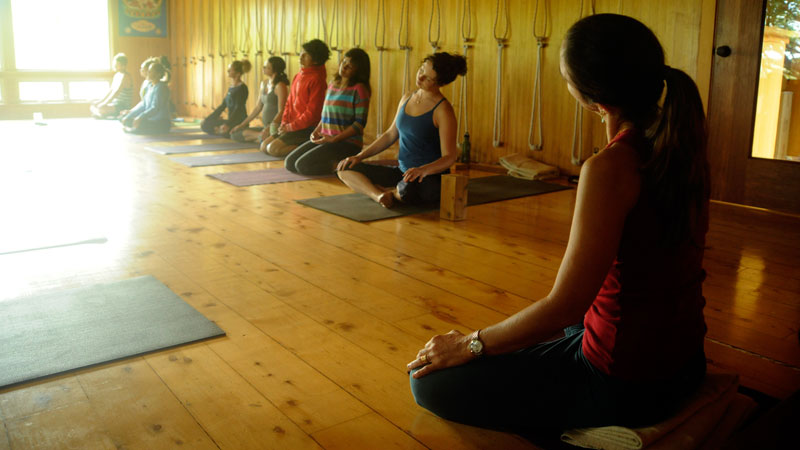Completing a 200-hour teacher training is a major accomplishment for a yogi, but it may not be all that’s necessary to become the yoga teacher that students deserve, says Eddie Modestini, a longtime student of K. Pattabhi Jois and B.K.S. Iyengar.
“That’s kind of a short period of time to cover all that’s necessary to help somebody become a good teacher,” says Modestini, who teaches both 200- and 500-hour teacher training courses exclusively at his Maya Yoga Studio in Maui. “If you have a few years of yoga experience, and you have been teaching for let’s say one year, even in your living room to friends, then a 200-hour training is more reasonable,” he adds. “But a lot of people are showing up with very little background in yoga—some have only taken one class—so they’ve basically foregone all the beginning work and preparation that’s necessary to accrue before you start studying how to teach.”
That’s because there’s a difference between learning yoga and learning how to teach yoga, Modestini says.
“People are coming to teacher trainings and they’re learning postures, sequences, sutras, chants, they might even learn the names of the poses in Sanskrit, but that’s just the information that you’re supposed to be responsible for,” Modestini says. “Presenting it to students is entirely different. You need to learn to be able to see what a student really needs in a yoga class, how to see and understand bodies. I studied with Mr. Iyengar for 25 years—what I was looking for from him was how to see and understand students. He would look at somebody and know immediately how to teach them what they needed.”
“A lot of people are showing up with very little background in yoga—some have only taken one class—so they’ve basically foregone all the beginning work and preparation that’s necessary to accrue before you start studying how to teach.”
Not only does a good teacher know how to modify a class for every individual, he or she must also learn how to adapt on the fly, Modestini says.
“You also have to learn how to change the sequence when your class suddenly changes; for example, for beginners—if the [planned] poses are no longer appropriate. A good teacher really pays attention to the students and presents an intelligent sequence, the right directions for the right poses, the right pace, the right intonation in voice, and knows how to lead people,” he says. “There are so many qualities that are so important to learn.”
While a 200-hour teacher training course is certainly a learning opportunity as well as an introduction to teaching yoga, Modestini believes the best way to learn how to teach yoga is to actually teach yoga. “If you’re not teaching, you’re not learning how to teach,” he says.
From: Yoga Journal

